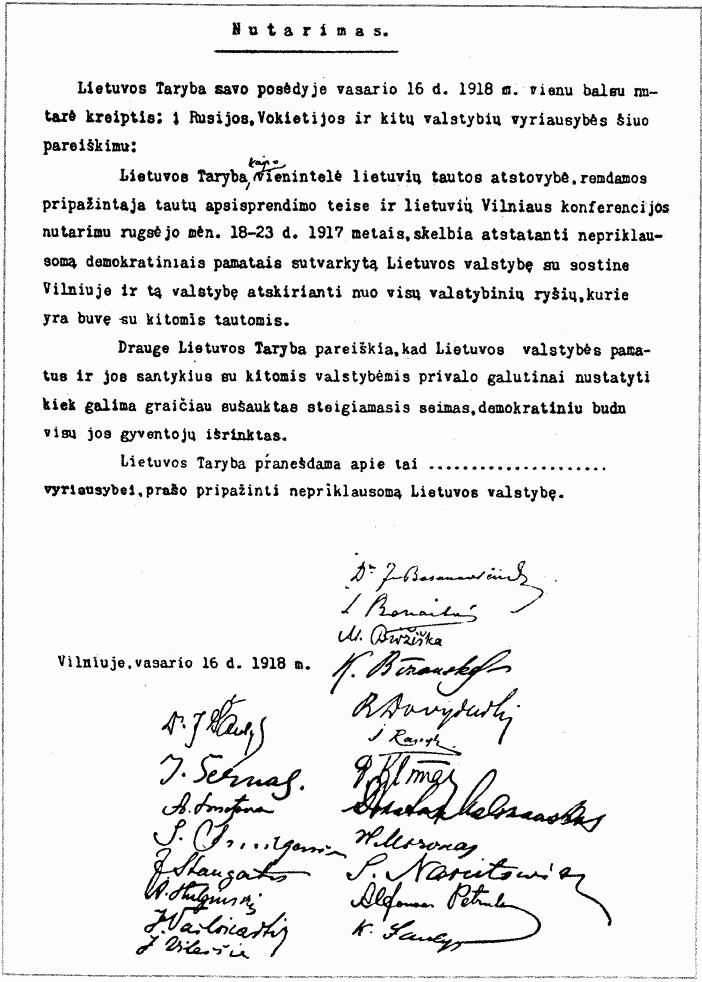|
Pierre Bonnier
Pierre Bonnier (16 August 1861 in Templeuve – 22 March 1918 in Paris) was a French otologist. He was the brother of architect Louis Bonnier (1856–1946). He studied medicine in Paris, and in 1897 began work as an assistant in the medical clinic of the Hôtel-Dieu in Paris. In 1901 he was named president of Société d’Otologie et de Laryngologie de Paris. He was a member of the Institut Psychologique (from 1902) and the Société de Neurologie (from 1903).Classic Cases in Neuropsychology, Volume 2 edited by Chris Code, Yves Joanette, Andre Roch Lecours, Claus-W. Wallesch He specialized in research of auditory and |
Templeuve-en-Pévèle
Templeuve-en-Pévèle (, before 2015: ''Templeuve'') is a commune in the Nord department in northern France. Name The commune is recorded as Templovium in 877, but was subsequently called Templeuve. The name may be derived from ''Templum Jovis'' meaning ''The Temple of Jupiter''. In October 2014, the council voted to change the commune's name to "Templeuve-en-Pévèle". The name change took effect 16 November 2015. 16 November 2015 Population Heraldry Windmill Templeuve-en-Pévèle is the location of a windmill. The windmill tower is first mentioned in 1328 in rent documents of , as the "Moul ...[...More Info...] [...Related Items...] OR: [Wikipedia] [Google] [Baidu] |
Paris
Paris () is the capital and most populous city of France, with an estimated population of 2,165,423 residents in 2019 in an area of more than 105 km² (41 sq mi), making it the 30th most densely populated city in the world in 2020. Since the 17th century, Paris has been one of the world's major centres of finance, diplomacy, commerce, fashion, gastronomy, and science. For its leading role in the arts and sciences, as well as its very early system of street lighting, in the 19th century it became known as "the City of Light". Like London, prior to the Second World War, it was also sometimes called the capital of the world. The City of Paris is the centre of the Île-de-France region, or Paris Region, with an estimated population of 12,262,544 in 2019, or about 19% of the population of France, making the region France's primate city. The Paris Region had a GDP of €739 billion ($743 billion) in 2019, which is the highest in Europe. According to the Economis ... [...More Info...] [...Related Items...] OR: [Wikipedia] [Google] [Baidu] |
Otologist
Otology is a branch of medicine which studies normal and pathological anatomy and physiology of the ear (hearing and vestibular sensory systems and related structures and functions) as well as their diseases, diagnosis and treatment. Otologic surgery generally refers to surgery of the middle ear and mastoid related to chronic otitis media, such as tympanoplasty, or ear drum surgery, ossiculoplasty, or surgery of the hearing bones, and mastoidectomy. Otology also includes surgical treatment of conductive hearing loss, such as stapedectomy surgery for otosclerosis. Neurotology, a related field of medicine and subspecialty of otolaryngology, is the study of diseases of the inner ear, which can lead to hearing and balance disorders. Neurotologic surgery generally refers to surgery of the inner ear or surgery that involves entering the inner ear with risk to the hearing and balance organs, including labyrinthectomy, cochlear implant surgery, and surgery for tumors of the tempo ... [...More Info...] [...Related Items...] OR: [Wikipedia] [Google] [Baidu] |
Louis Bonnier
Louis Bernard Bonnier (14 June 1856 – 16 September 1946) was a French architect known for his work as an urban planner for the city of Paris. He was instrumental in loosening the restrictions on the appearance of buildings in Paris, which resulted in the blossoming of ''Art Nouveau'' buildings. He designed many significant buildings himself, including private villas, public housing and railway buildings. In all his work he was true to the rationalist principles of ''Art Nouveau''. Life Early years: 1856–86 Louis Bernard Bonnier was born on 14 June 1856 in Templeuve, Nord. The Bonnier family were originally laborers. Louis Bonnier was the son of a notary's clerk who later became manager of a sugar factory and then a wine salesman. Louis's father was a committed Republican. Louis was the oldest of four boys. His brothers were Charles (1803–1926), Pierre Bonnier (1861–1918) and Jules (1859–1908). Jules Bonnier became a well-known biologist. Bonnier studied painting and a ... [...More Info...] [...Related Items...] OR: [Wikipedia] [Google] [Baidu] |
Hôtel-Dieu De Paris
In French-speaking countries, a hôtel-Dieu ( en, hostel of God) was originally a hospital for the poor and needy, run by the Catholic Church. Nowadays these buildings or institutions have either kept their function as a hospital, the one in Paris being the oldest and most renowned, or have been converted into hotels, museums, or general purpose buildings (for instance housing a préfecture, the administrative head office of a French department). Therefore, as a secondary meaning, the term hôtel-Dieu can also refer to the building itself, even if it no longer houses a hospital. Examples include: ;Belgium *Notre Dame à la Rose, founded in 1242 ;France *Hôtel-Dieu d'Angers, founded in 1153 * Hôtel-Dieu de Beaune, founded in 1443 * Hôtel-Dieu of Carpentras, built in 1754 *Hôtel-Dieu of Château-Thierry, founded in 1304 *Hôtel-Dieu of Cluny, built in the 17th and 18th century * Hôtel-Dieu de Lyon, created in 1478 *Hôtel-Dieu of Nantes, completed in 1508 * Hôtel-Dieu de Paris ... [...More Info...] [...Related Items...] OR: [Wikipedia] [Google] [Baidu] |
Auditory System
The auditory system is the sensory system for the sense of hearing. It includes both the sensory organs (the ears) and the auditory parts of the sensory system. System overview The outer ear funnels sound vibrations to the eardrum, increasing the sound pressure in the middle frequency range. The middle-ear ossicles further amplify the vibration pressure roughly 20 times. The base of the stapes couples vibrations into the cochlea via the oval window, which vibrates the perilymph liquid (present throughout the inner ear) and causes the round window to bulb out as the oval window bulges in. Vestibular and tympanic ducts are filled with perilymph, and the smaller cochlear duct between them is filled with endolymph, a fluid with a very different ion concentration and voltage. Vestibular duct perilymph vibrations bend organ of Corti outer cells (4 lines) causing prestin to be released in cell tips. This causes the cells to be chemically elongated and shrunk ( somatic motor), and ... [...More Info...] [...Related Items...] OR: [Wikipedia] [Google] [Baidu] |
Vestibular System
The vestibular system, in vertebrates, is a sensory system that creates the sense of balance and spatial orientation for the purpose of coordinating movement with balance. Together with the cochlea, a part of the auditory system, it constitutes the labyrinth of the inner ear in most mammals. As movements consist of rotations and translations, the vestibular system comprises two components: the semicircular canals, which indicate rotational movements; and the otoliths, which indicate linear accelerations. The vestibular system sends signals primarily to the neural structures that control eye movement; these provide the anatomical basis of the vestibulo-ocular reflex, which is required for clear vision. Signals are also sent to the muscles that keep an animal upright and in general control posture; these provide the anatomical means required to enable an animal to maintain its desired position in space. The brain uses information from the vestibular system in the head a ... [...More Info...] [...Related Items...] OR: [Wikipedia] [Google] [Baidu] |
Lateral Vestibular Nucleus
The lateral vestibular nucleus (Deiters's nucleus) is the continuation upward and lateralward of the principal nucleus, and in it terminate many of the ascending branches of the vestibular nerve. Structure It consists of very large multipolar cells whose axons form an important part of the posterior longitudinal bundle (aka medial longitudinal fasciculus) of the same and the opposite side. The axons bifurcate as they enter the posterior longitudinal bundle, * the ''ascending branches'' send terminals and collaterals to the motor nuclei of the abducens, trochlear and oculomotor nerves via the ascending component of the medial longitudinal fasciculus, and are concerned in coördinating the movements of the eyes with alterations in the position of the head; * the ''descending branches'' pass down in the posterior longitudinal bundle into the anterior funiculus of the spinal cord as the vestibulospinal fasciculus ( anterior marginal bundle) and are distributed to motor nuclei of th ... [...More Info...] [...Related Items...] OR: [Wikipedia] [Google] [Baidu] |
Vertigo
Vertigo is a condition where a person has the sensation of movement or of surrounding objects moving when they are not. Often it feels like a spinning or swaying movement. This may be associated with nausea, vomiting, sweating, or difficulties walking. It is typically worse when the head is moved. Vertigo is the most common type of dizziness. The most common disorders that result in vertigo are benign paroxysmal positional vertigo (BPPV), Ménière's disease, and labyrinthitis. Less common causes include stroke Stroke (also known as a cerebrovascular accident (CVA) or brain attack) is a medical condition in which poor blood flow to the brain causes cell death. There are two main types of stroke: ischemic, due to lack of blood flow, and hemorrhagic ..., brain tumors, brain injury, multiple sclerosis, vestibular migraine, migraines, trauma, and alternobaric vertigo, uneven pressures between the middle ears. Physiologic vertigo may occur following being exposed to mo ... [...More Info...] [...Related Items...] OR: [Wikipedia] [Google] [Baidu] |
Phonation
The term phonation has slightly different meanings depending on the subfield of phonetics. Among some phoneticians, ''phonation'' is the process by which the vocal folds produce certain sounds through quasi-periodic vibration. This is the definition used among those who study laryngeal anatomy and physiology and speech production in general. Phoneticians in other subfields, such as linguistic phonetics, call this process '' voicing'', and use the term ''phonation'' to refer to any oscillatory state of any part of the larynx that modifies the airstream, of which voicing is just one example. Voiceless and supra-glottal phonations are included under this definition. Voicing The phonatory process, or voicing, occurs when air is expelled from the lungs through the glottis, creating a pressure drop across the larynx. When this drop becomes sufficiently large, the vocal folds start to oscillate. The minimum pressure drop required to achieve phonation is called the phonation thresh ... [...More Info...] [...Related Items...] OR: [Wikipedia] [Google] [Baidu] |
1861 Births
Statistically, this year is considered the end of the whale oil industry and (in replacement) the beginning of the petroleum oil industry. Events January–March * January 1 ** Benito Juárez captures Mexico City. ** The first steam-powered carousel is recorded, in Bolton, England. * January 2 – Friedrich Wilhelm IV of Prussia dies, and is succeeded by Wilhelm I. * January 3 – American Civil War: Delaware votes not to secede from the Union. * January 9 – American Civil War: Mississippi becomes the second state to secede from the Union. * January 10 – American Civil War: Florida secedes from the Union. * January 11 – American Civil War: Alabama secedes from the Union. * January 12 – American Civil War: Major Robert Anderson sends dispatches to Washington. * January 19 – American Civil War: Georgia secedes from the Union. * January 21 – American Civil War: Jefferson Davis resigns from the United States Senate ... [...More Info...] [...Related Items...] OR: [Wikipedia] [Google] [Baidu] |
1918 Deaths
This year is noted for the end of the World War I, First World War, on the eleventh hour of the eleventh day of the eleventh month, as well as for the Spanish flu pandemic that killed 50–100 million people worldwide. Events Below, the events of World War I have the "WWI" prefix. January * January – 1918 flu pandemic: The "Spanish flu" (influenza) is first observed in Haskell County, Kansas. * January 4 – The Finnish Declaration of Independence is recognized by Russian Soviet Federative Socialist Republic, Soviet Russia, Sweden, German Empire, Germany and France. * January 9 – Battle of Bear Valley: U.S. troops engage Yaqui people, Yaqui Native American warriors in a minor skirmish in Arizona, and one of the last battles of the American Indian Wars between the United States and Native Americans. * January 15 ** The keel of is laid in Britain, the first purpose-designed aircraft carrier to be laid down. ** The Red Army (The Workers and Peasants Red Army) ... [...More Info...] [...Related Items...] OR: [Wikipedia] [Google] [Baidu] |







